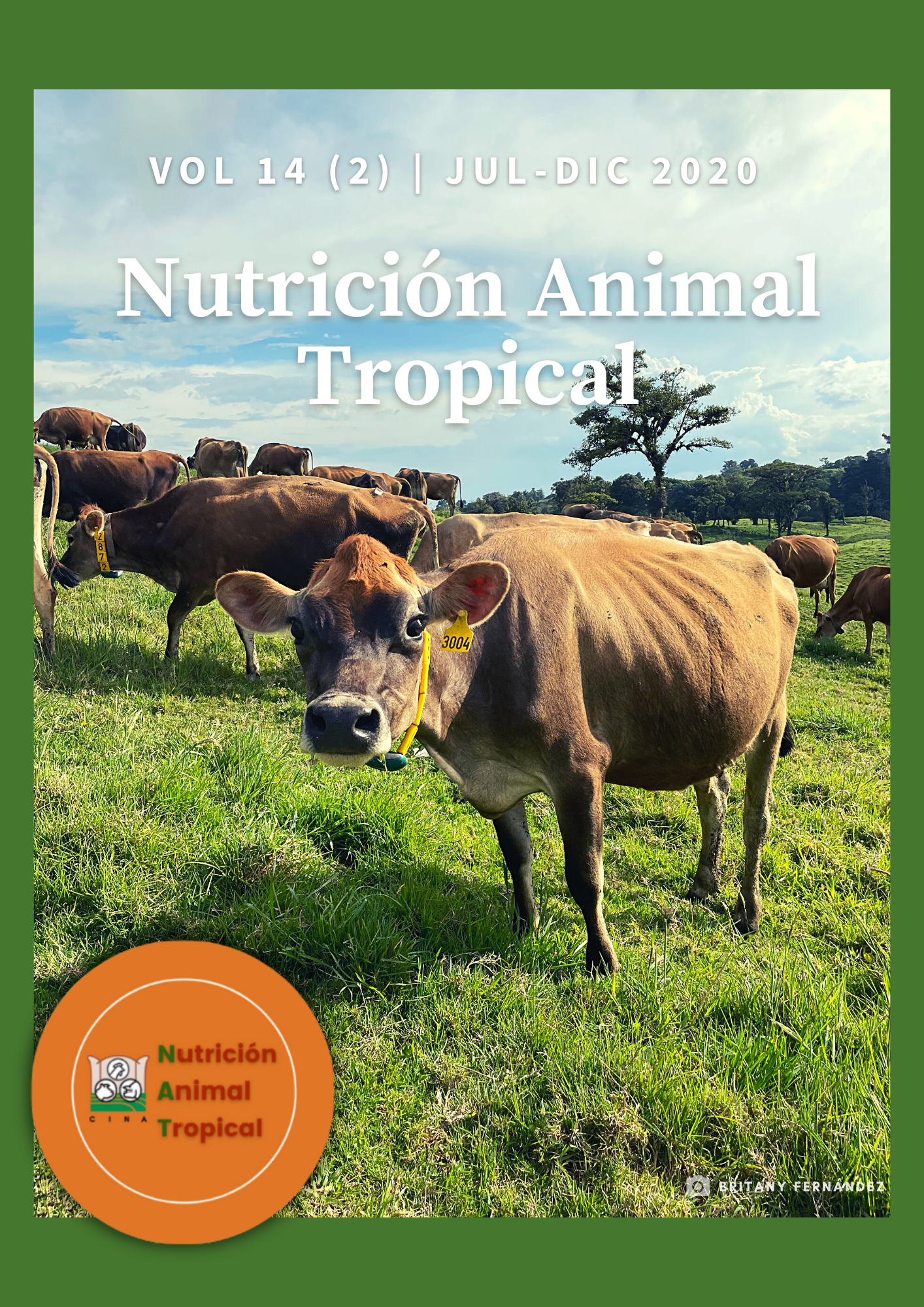Abstract
The energy content of ingredients or rations cannot be determined by using standard analytical techniques, so most laboratories provide the user with estimated energy values and the user is generally unaware of how the energy concentration of ingredients or rations is estimated. Thus, the objective of this document is to present an extract of the methodology used by the NRC (2001) model to determine the energy content in feed or rations for dairy cattle. Within the steps, it is required to calculate total digestible nutrients (TDN) in the ingredients or ration at a maintenance level (TDN1x) using the energy contribution provided by the chemical fractions of the feed (fibrous carbohydrates, non-fibrous carbohydrates, lipids and crude protein) measured or calculated from laboratory analysis and from its true digestibility, and then with the help of a series of mathematical equations calculate its energy content. Despite the fact that many years have passed since the publication of the nutritional requirements of dairy cattle, there is still a lot of unawareness on the part of technicians and students in the field of how to obtain this value, so it is intended to make this information more accessible to potential users in Costa Rica and Latin America.
References
ESPOSITO, G., IRONS, P., WEBB, E.,&CHAPWANYA, A. (2014).Interactions between negative energy balance, metabolic diseases, uterine health and immune response in transition dairy cows. Anim.Reprod.Sci. 144(3-4):60-71.
FERRELL, C.L. (1988). Energy metabolism. In: The ruminant animal. Digestive physiology and nutrition. Church, D.C (ed). Prentice Hall, Inc. USA. 250-268 p.
JOHNSON, K.A.,& JOHNSON, D.E.(1995). Methane emissions from cattle. J. Anim. Sci.73:2483-2492.
KELLEMS, R.O.,& CHURCH, D.C. (1998). Livestock feeds and feeding. 4thed. Upper Saddle River, N. J., USA. Prentice-Hall, Inc. 546 p.
MOE, P.W., & TYRRELL, H.F. (1972). The net energy value of feeds for lactation. J. Dairy Sci. 55:945-958.
NRC (NATIONAL RESEARCH COUNCIL). (2001). Nutrient requirements of dairy cattle. 7threv. ed. Washington, DC., USA. National Academy Press. 381 p.
WEISS, W. P. (1993). Predicting energy value of feeds. J. Dairy Sci. 76:1802-811.WEISS, W. P. (1998). Estimating the available energy content of feeds for dairy cattle. J. Dairy Sci. 81:830-839.
WEISS, W. P., CONRAD, H. R.,& ST. PIERRE, N. R. (1992). Atheoretically-based model for predicting total digestiblenutrient values of forages and concentrates. Anim. Feed Sci.Technol. 39:95-110.


